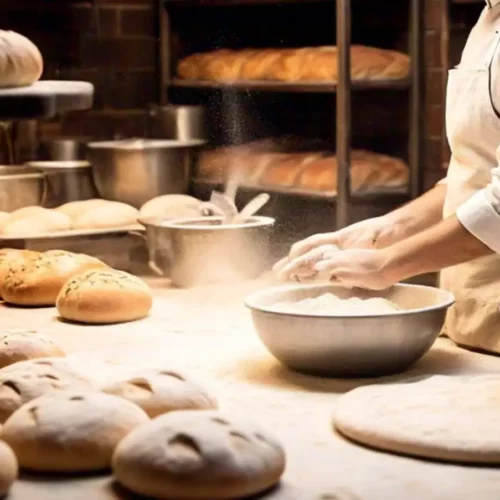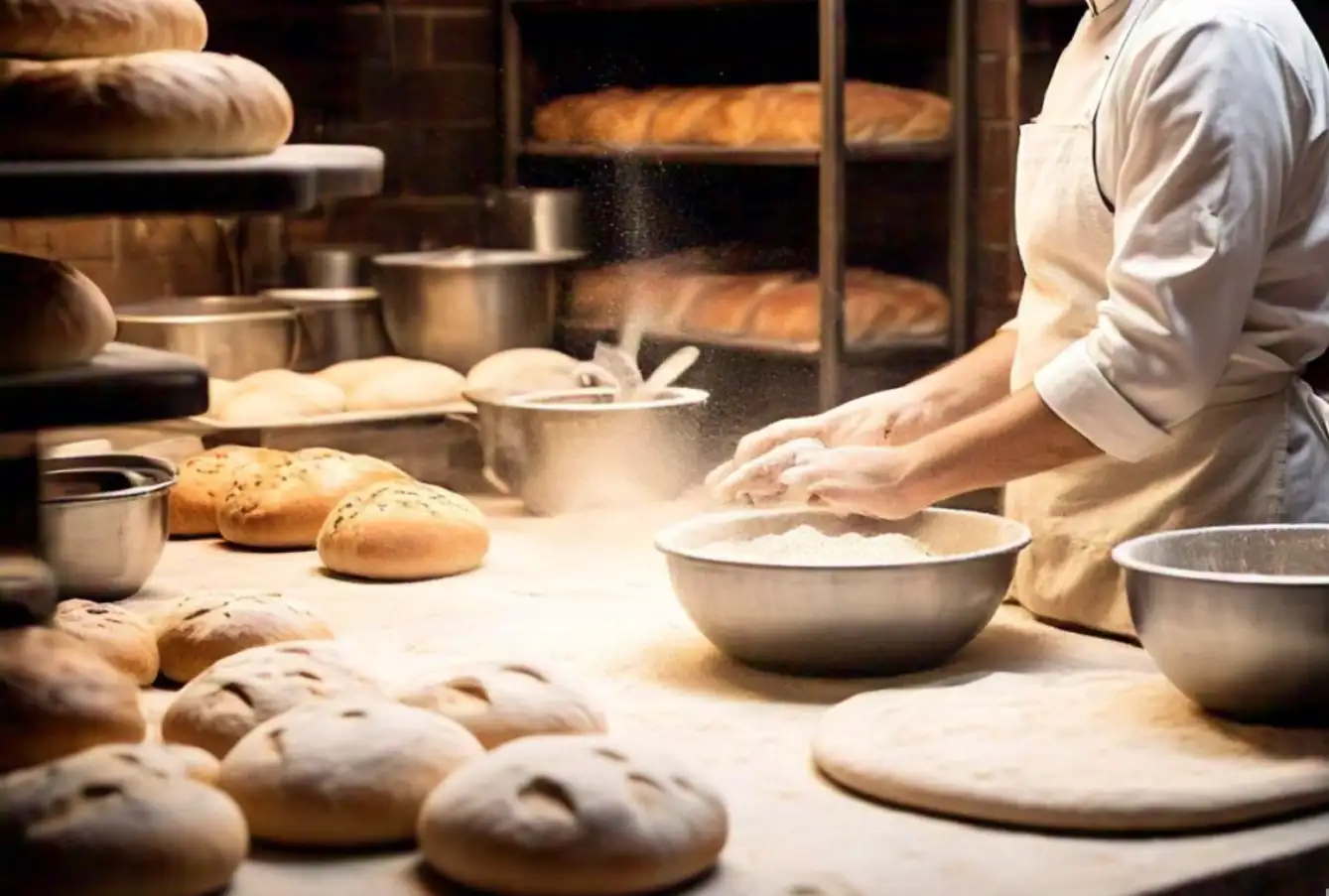Are you struggling to bake artisan bread at home that’s both delicious and simple? You’re not alone. Many home bakers find themselves intimidated by complicated techniques or disappointed with bland results. The Sullivan Street Bakery No-Knead Bread, popularized by Jim Lahey and Mark Bittman in 2006, offers a foolproof solution. With just a few ingredients and minimal effort, this recipe lets you create bakery-quality bread featuring a crusty exterior and a flavorful crumb, all thanks to its slow fermentation process. Read on to discover everything you need to know to master this method.
Yeast Amount and Its Role
The original Sullivan Street Bakery No-Knead Bread recipe calls for ¼ teaspoon of instant yeast. This small quantity might surprise novice bakers, but it works wonders due to the extended fermentation time of 18 to 24 hours. Here’s why:
- Slow Fermentation: The long resting time allows the yeast to gradually ferment the dough, developing complex flavors and creating a light, airy crumb. This process also gives the gluten in the dough ample time to develop naturally, resulting in better elasticity and structure without the need for kneading.
- Instant Yeast: This type of yeast is more concentrated than active dry yeast and doesn’t require proofing, making it ideal for this recipe.
- Adjustments: While ¼ teaspoon is the standard, some bakers experiment with slightly more yeast (½ teaspoon) to accelerate fermentation, particularly in cooler environments.
Can You Use Active Dry Yeast?
Yes, you can substitute active dry yeast for instant yeast in this recipe. Use the same amount (¼ teaspoon) and mix it directly into the dry ingredients. Note that the rise time may be slightly longer when using active dry yeast due to its slower activation compared to instant yeast. If desired, dissolve the active dry yeast in a small amount of lukewarm water (taken from the recipe’s total) before incorporating it to ensure it activates properly. Use the same amount (¼ teaspoon) and mix it directly into the dry ingredients. Proofing is not required, but if you’re unsure about the yeast’s activity, you can dissolve it in a small amount of water (taken from the recipe’s total) before mixing it with the flour and salt.
Master different bread-making techniques by comparing Sullivan St Bakery’s no-knead method with Marc Vetri’s pizza dough approach.

King Arthur Bread Recipe
Ingredients
- 3 cups all-purpose or bread flour preferably King Arthur, known for its high protein content and consistent quality that ensures better gluten development and structure in baked goods
- ¼ teaspoon instant yeast
- 1¼ teaspoons coarse salt
- 1 5/8 cups water cool or room temperature
- Cornmeal or wheat bran for dusting
- Cooking oil spray optional
Instructions
- Mix the Dough:
- Combine flour, yeast, and salt in a large bowl.
- Add water and stir until a shaggy, sticky dough forms.
- Cover with plastic wrap or a cotton towel and let it rest at room temperature for 12 to 18 hours. The dough is ready when it’s dotted with bubbles and has doubled in size.
- Shape the Dough:
- Lightly flour a work surface and place the dough on it.
- Sprinkle the dough with a little more flour, fold it over itself once or twice, and let it rest for 15 minutes.
- Second Rise:
- Shape the dough into a ball and place it seam-side down on a floured surface or in a greased bowl dusted with cornmeal.
- Cover and let it rise for about 2 hours until doubled in size.
- Preheat the Oven:
- Place a Dutch oven (6- to 8-quart size) with its lid in the oven and preheat to 450°F. If you don’t have a Dutch oven, you can use a heavy oven-safe pot with a tight-fitting lid, or even bake the bread on a preheated baking stone or sheet pan, covered with an inverted metal bowl or aluminum foil for the first half of the baking time.
- Bake:
- Carefully transfer the dough into the hot pot, seam side up.
- Cover and bake for 30 minutes.
- Remove the lid and bake for an additional 15 to 30 minutes until the loaf is golden brown.
- Cool and Enjoy:
- Let the bread cool on a wire rack before slicing.
Tips for Best Results
- Room Temperature:
- Ideally, the dough should ferment at around 70°F. In colder climates, use a proofing box or place the dough in a slightly warmed oven (turned off).
- Vessel Options:
- A cast iron, enamel, Pyrex, or ceramic Dutch oven works well. For higher loaves, use a smaller pot (3 to 4 quarts).
- Flour Variations:
- Substitute up to 30% of the flour with whole wheat or rye for added flavor.
- Add-Ins:
- Mix in caraway seeds, chopped olives, cheese, or nuts during the initial dough mixing for unique flavors.
- Shaping:
- Try different shapes like baguettes or rolls. Use parchment paper for easier handling during the second rise.
FAQs
Why Does the Recipe Use So Little Yeast?
The extended fermentation time allows the small amount of yeast to gradually multiply and ferment the dough, resulting in a well-developed structure and flavor without the need for kneading.
Can I Shorten the Rising Time?
While 18 hours is optimal, some bakers reduce it to 8 to 12 hours with good results. However, shorter times may affect the depth of flavor and texture.
Is the Dough Supposed to Be Sticky?
Yes, the dough is intentionally wet and sticky. This hydration level helps create the bread’s signature open crumb and crusty exterior.
What If My Dutch Oven Has a Plastic Knob?
Replace the plastic knob with a metal one or cover the lid’s knob with aluminum foil to make it oven-safe at high temperatures.
How Do I Store Leftover Bread?
Store the bread in a paper bag or wrapped in a kitchen towel at room temperature for up to 2 days. To restore its crustiness after storage, heat the bread in an oven at 350°F for 5-10 minutes before serving. For longer storage, freeze slices and toast them as needed.
The Sullivan Street Bakery No-Knead Bread is a testament to how simple ingredients and a bit of patience can produce bakery-quality results. By following these tips and tricks, you’ll master this beloved recipe and impress everyone with your baking skills!

